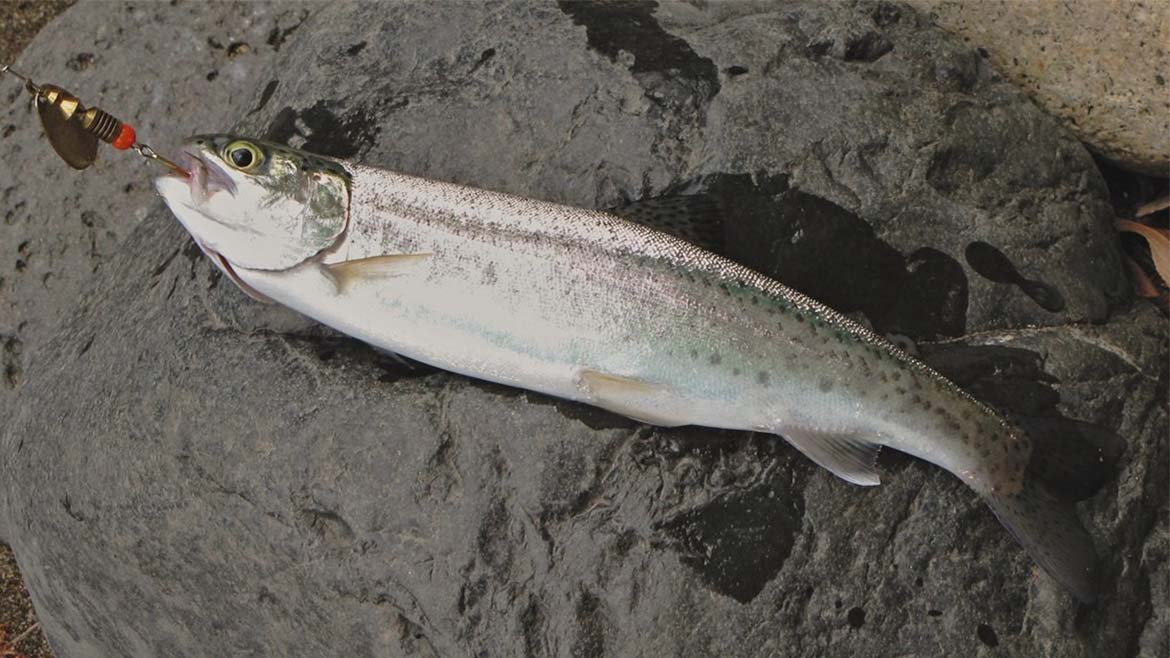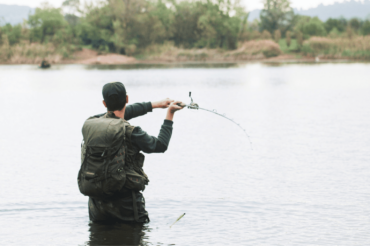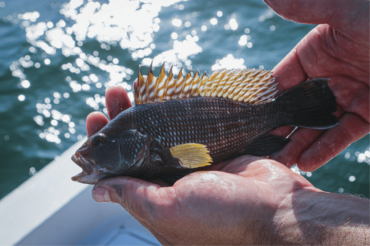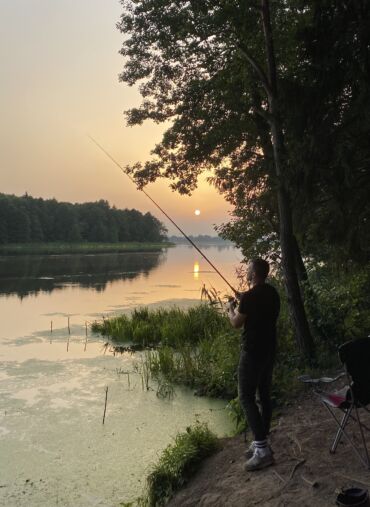Seasons may change, but an angler’s desire to catch fish typically has little variance.
If we have the time to devote to fish, the seasons really don’t matter. How we prepare for them, however, does,
There are myriad factors involved once you make your decision to pack up and get after that striped bass, tuna, trophy rainbow trout, bluegill, or largemouth bass. Fish availability, techniques, and tackle vary with the seasons, along with the roles that everything from temperature, barometric pressure, wind, and tides play.
All these factors can complicate what should be a carefree, enjoyable endeavor. Most of us fish to escape the everyday grind and pressure associated with living in our click-through, always-on world.
[Note: The Fishbox app is a great destination for locating fish in your specific geographic area. It can tell you what’s biting near your home and help you save time and money. Our technology is your advantage!]
Below, you’ll find some helpful tips for fishing in each of the seasons and how to hook the fish you’re targeting. Simply stated: By aligning with the seasonal patterns of fish, you can markedly enhance your chances of a successful fishing trip.
Get your personalized fishing map
Answer a quick quiz and get your own personalized fishing map
Expert Opinion on The Best Time to Fish
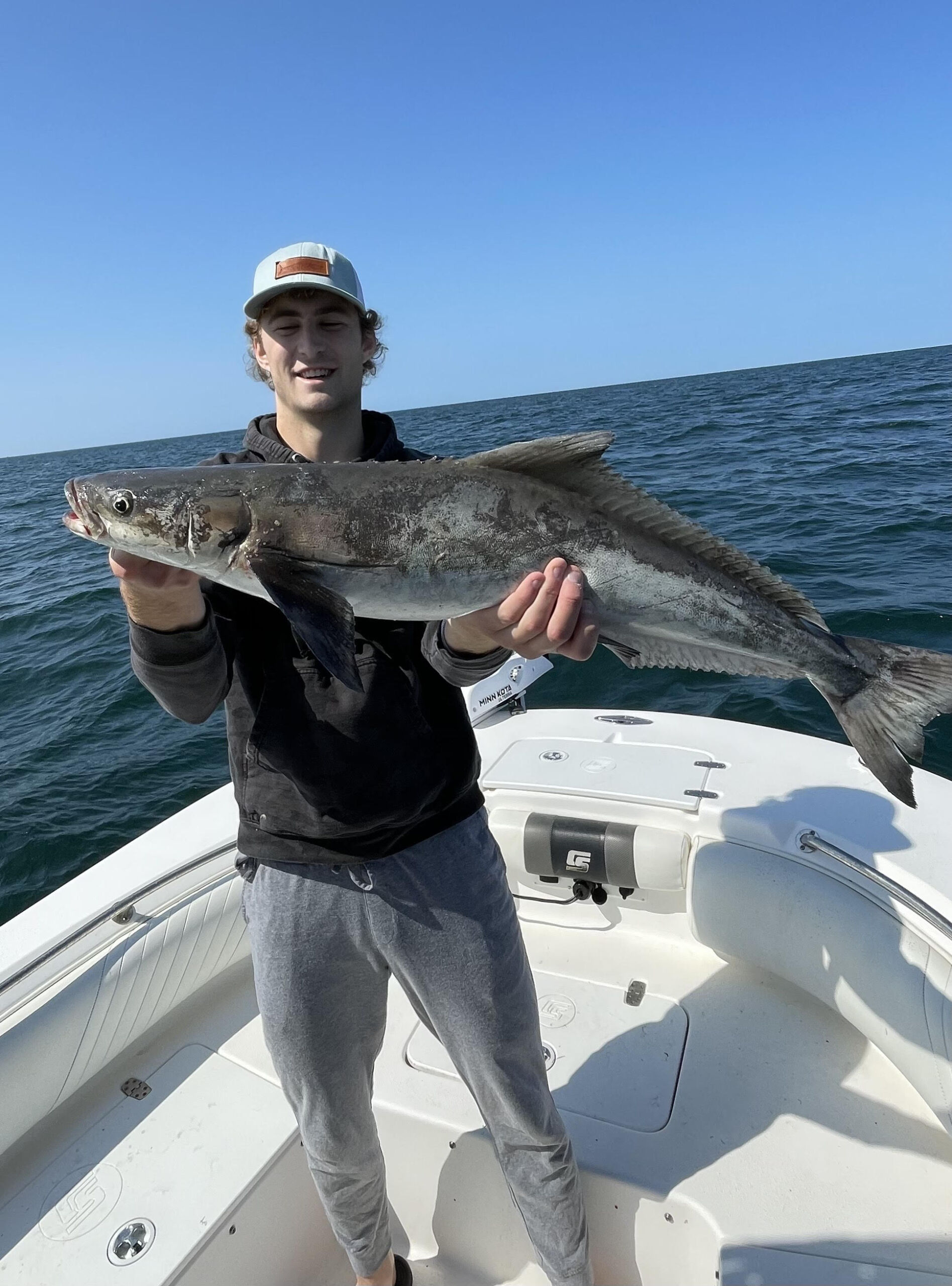
Pierce Latta
16 years fishing experience
“The best fishing season has been an age-old debate, and from what I can tell, almost every argument is valid. There are simply so many different fish species and places around the world that experience the best fishing all over the calendar year. This being said it makes it extremely difficult to narrow down what is the single best fishing season. As a result, this article breaks down the four seasons and how fishing changes within them to give us readers the best chance to catch some monster fish.
The article starts off with a discussion of the fall fishing season, which is my personal favorite. For us in North Carolina, it really marks the start of tournament king mackerel fishing, which is always a highlight. Additionally, the weather is just more pleasant in the Fall than a blistering hot summer or freezing Winter. For me, Fall remains that sweet spot balancing personal comfort with disability. The article talks a lot about how big storm systems often move across the world in the Fall, allowing for changes in pressure, which often positively affects the bite of many different species.
Winter is the next season, which is my least favorite season. While there is still a good fishery for some species, like speckled trout, the vast majority of other fish retreat to deeper water and begin to slow down as their metabolism slows. This can often contribute to very slow bites. Moreover, the Winter is just cold. For me, it’s not as enjoyable to get outside, which is why this combination makes it my least favorite season to fish.
The next season the article talks about is Spring. The article heavily mentions Spring as a period of a new beginning with a lot of different species reproducing and spawning. These reproduction cycles often make for great fisheries in the Spring, and just about every year, you will see me taking advantage of this for largemouth bass. Another reason why I love fishing in the Spring is because both the water and air warm up, making the fish more comfortable and active while also allowing me to be more comfortable while fishing.
The last season mentioned is obviously Summer. In my years of experience, Summer is pretty much a boom or bust for most species. Either the heat really turns the bite on or really turns it off. However, one of the great facets of Summer that the article mentions is the longer days. Not only can you wake up earlier and it is lighter outside, but in some parts of the country, it is light till around 9 pm at night. This offers anglers a huge advantage in giving them extra time on the water. For myself, Summer generally marks the start of shark fishing season. The water begins to warm, which pushes the bait and, thus, the other predators in. We can even send out baits in the kayak as late as 9 pm because of the daylight, which is amazing.
Hopefully, after reading this article, you can easily see how our God created the seasons uniquely. In each and every season, I promise there is always some fish willing to bite, but you also must be willing to do your research and put in time on the water to see success year-round. I hope you guys have enjoyed reading this article as much as I have. As always, good luck and tight lines!”
Visit his Instagram profile.
Subscribe to his YouTube channel.
FALL
Fall isn’t just about changing leaves, cooler temperatures, and hot, pumpkin-spiced lattes. It’s also a season that many anglers say offers the best fishing of the year.
In the fall, fish begin to feed more aggressively to fatten up for the winter months and, in some cases, migrate. Besides striped bass and bluefish in the Northeast waters, in many regions of the country fall is an optimal time for rainbow and brown trout, largemouth and smallmouth bass, and salmon, which are often found in abundance in rivers, streams, and lakes.
Cooler water temperatures—which tend to drive fish toward deeper water and pools—spur fish activity and make them a little less choosy over the bait they grab.
One of the biggest factors involved in fall fishing is the weather and weather systems.
Fishing just before and after a big weather system moves through your area is key, as these can be the best times to go fishing. Before a storm system arrives, barometric pressure typically drops. With few exceptions (like bottom-dwelling fish such as catfish and flounder–low barometric pressure turns on fish activity, while increased barometric pressure decreases the bite rate.
In saltwater environments, for example, days before a storm hits, big tides push into coastal marshes, and fish feed aggressively. Higher saline content in coastal byways water pushes in everything from bluefish and Spanish mackerel to redfish and flounder.
If the seas remain rough, fish like yellowfin tuna will typically retreat to deeper waters. If you’re set on fishing under these conditions, make sure you find an experienced captain and the proper boat for angling under these conditions.
In freshwater, once the stormy weather has passed, water quality settles, and smaller baitfish return to their typical locales. Larger gamefish follow since they may have struggled to find food during the turbulent conditions.
At this time of year, even when conditions are not favorable, dawn and dusk often offer the best time for fishing as they trigger periods of active feeding. Many anglers suggest using bright yellow and green lures to help attract fish since they primarily use their sight to locate prey. Conversely, avoid red-colored lures where water visibility is poor since they can’t be easily spotted.
WINTER
Fishing during the winter months can be an exhilarating experience, or it can simply be a battle to keep your fingers and toes warm and functional—along with your fishing gear.
Depending on the area of the country you fish, activity can slow to a crawl, while in warmer climes, such as Florida, Texas, and the South, anglers report great action on everything from walleye, pike, crappie, and bluegill. Smallmouth bass are also a possibility in some areas of the Midwest and South before lakes, rivers, and streams ice up.
Read also: Texas Fishing Seasons: Your Comprehensive Guide
Around the country, several anglers reported to us that one of the keys to winter fishing is water visibility. Since fish use their sight primarily to locate prey, fishing when water is “clean” and visibility is good is helpful for hooking up. Waiting a few days following a winter storm and fishing in the morning will certainly improve your chances.
For instance, according to a study by the Bass Fishing Institute, bass become noticeably more aggressive and strike at lures more quickly when in clear waters (with more than 5 feet of visibility).
Cooler water temperatures are another factor to consider when fishing in winter. When the mercury dips, fish—both freshwater and saltwater-seek shelter near structures such as bridges, rocky ledges, and deeper water. Since fish are cold-blooded creatures, the ambient water temperature has a direct effect on their body temperature, so they are constantly seeking to maintain consistent levels.
Since fish are in “survival mode” during the winter, feeding slows, but anglers can still target species like pike, muskie, and others by using larger or heavier lures. For example, one angler in the Midwest told us he switches from 10–14-inch flies in the summer to 14–20-inch flies in the winter. Another uses lures resembling baitfish, preferably spinners or lures or noisy-lipped crankbaits. A slow presentation and retrieval, along with longer pauses, are also helpful techniques.
For saltwater, those hunting tuna and cod in the Northeast during the winter months—which is not for the cold-sensitive or mild-mannered—employ heavier tackle and deep-diving crankbait, jigs, and weighed soft plastics. Bait casting reels that can handle heavier lines and lures are also helpful.
NOTE: Of course, any discussions about fishing in winter must include ice fishing, but given all its intricacies—portable shelters, ice augers, and the right fishing equipment—we’ll have to focus on that at another time.
Get your personalized fishing map
Answer a quick quiz and get your own personalized fishing map
SPRING
In many areas of the country, spring signals a new fishing season. It’s a time of renewal when old gear has been refreshed or replaced, the waters begin to slowly warm, and hungry fish emerge from their winter hideaways.
Spring is also the season with the greatest fluctuations in tides due to lunar and solar cycles. A good time to fish during tide changes is when water is moving; that is, changing from low tide to high tide or vice-versa. The change in tide creates a current flow that carries bait and, naturally, fish looking to feed.
The period between low and high time, or “slack tide,” is best avoided.
Fish are more likely to move closer to shore and venture into shallow waters during high tide. In low tide, they tend to stay in deeper waters. Spring season usually has the strongest tides of the year, which can lead to more active feeding.
In many areas of the country, spring is the prime time for catching largemouth bass and trout. It’s the beginning of their spawning season, which can last from a few days to several weeks, Fish tend to congregate near shore in shallow waters or in the case of largemouth bass, grassy beds.
Northeast anglers looking for trout typically use worms, nymphs, and flies, while those looking for bass employ jerkbaits and crankbaits, which are usually used to mimic crawfish, a favorite springtime food source in many bass fisheries.
Several anglers suggested keeping your retrieve slow in early spring and increasing the speed as fish become more active.
For saltwater anglers on the East Coast, water temperatures can significantly fluctuate due to southerly winds and the direction of the Gulf Stream. This needs to be taken into consideration; the warmer the water, the closer to the surface the fish will likely congregate. Some of the best fish to target in the spring on the East Coast? Everything from Red Drum, pompano, flounder, tautog, and bluefish are all consistently popular catches.
When is the best time to fish in spring? It often depends on one’s locale, but generally, late morning to early afternoon and early evening are popular choices. In the late morning, fish start to move around and look to feed, then at dusk, they are actively seeking food.
SUMMER
For many novice and experienced anglers, summer is the season for fishing. The days are longer, the temperature is toasty, and vacation days are typically used. While there are some exceptions around the country when it comes to summer heat, it’s the season where science and simplicity are at the forefront. In other words, know the environment in which you’re fishing and be prepared to adjust your tackle on the fly.
Summer brings long, warm days that provide ample opportunities for extended fishing trips. Higher temperatures drive fish to deeper, cooler waters during the hottest parts of the day, making it crucial for anglers to adjust their strategies. Early mornings and late evenings are the best times for fishing, as fish move closer to the surface to feed when temperatures are lower.
Popular freshwater summer species include largemouth bass, catfish, and pike, which are known for their aggressive feeding habits during this season. For saltwater anglers, flounder and bonito are prolific on the East Coast, while late summer signals the start of striped bass and blue fins runs. Down in the Gulf region, redfish are frequently targeted in the flats.
Read also: Florida Redfish Seasons and Regulations: A Comprehensive Guide
While summer fishing can be highly productive, it’s also the season when fishing locales can become crowded with other anglers. To increase your chances of hooking up, consider exploring less popular locations or fishing during off-peak times.
Generally, try lures and live bait near the surface in the dawn and early morning hours before switching to rigs capable of performing in deeper waters during the midway period. Then at dusk, switch back to baits that perform near the water’s surface.
Spinning reels and rods with lighter lines are more suitable for this time of year. Fly fishing gear is also popular in the spring and summer, especially for species like trout and salmon that are attracted to artificial flies.
Another thing to keep in mind: Summer winds can often affect fish activity and your fishing technique. Use the wind to your advantage by employing drift techniques; for example, if the wind is blowing from the north, head to the northernmost area of your destination and let the wind (and current) drift your bait past where fish typically congregate.
Conclusion
Additionally, waves created by wind also accelerate the oxygenation in water, which makes the bass more active when it comes to feeding and movement in general.
So, here’s our rundown of the four seasons for fishing. While each is different, they create the type of challenges that fuel anglers’ passions. All it takes is some research, asking some questions, bringing the proper gear, and understanding how environmental conditions affect fish behavior.
Once those factors are handled, your fishing experience in all seasons will be greatly enhanced. And when it comes right down to it, that’s all that any angler wants.
